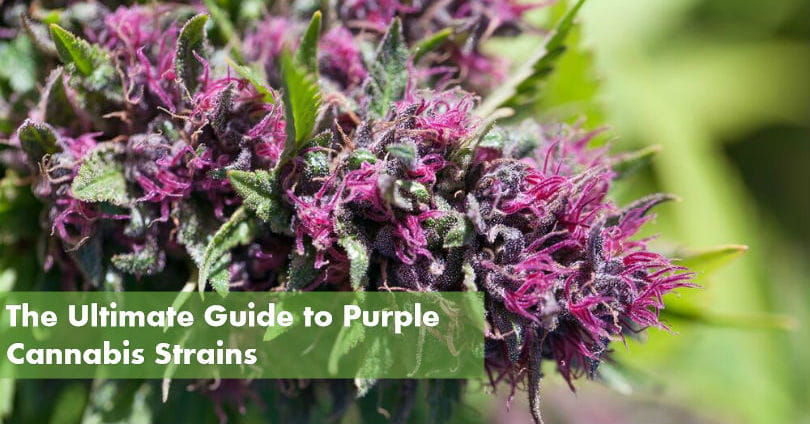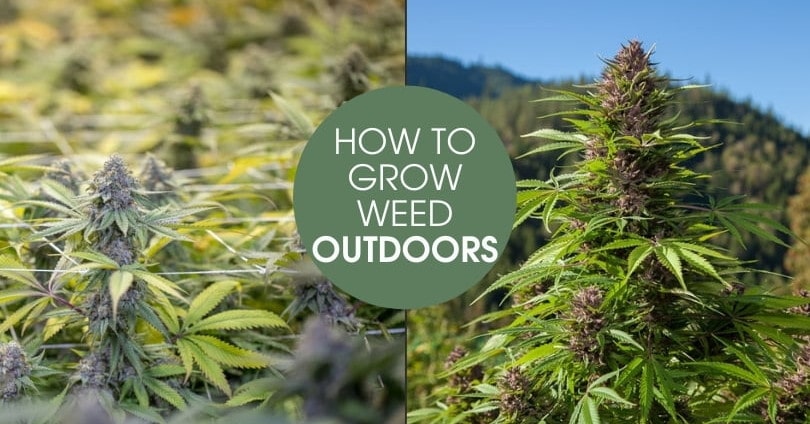 Whether you’re growing one or multiple cannabis plants — the goal is to produce the heaviest and dankest yield imaginable.
Whether you’re growing one or multiple cannabis plants — the goal is to produce the heaviest and dankest yield imaginable.
To do so, you must integrate a high-yield training technique into your marijuana garden. There are many cannabis training techniques at your disposal, as outlined in our Encyclopedia of Cannabis Training Methods.
However, cannabis cultivators often find themselves deciding between two — topping or FIM.
If you’re ready to push bud production into overdrive — read this guide on how to top and FIM cannabis plans from start to finish. You’ll discover how to implement each technique in a few easy steps — are you ready?
Let’s go!
What is Topping and FIM and Why You Should Use One of Them on Your Cannabis Plants
Alright, let’s do a brief overview of these two time-tested cannabis training techniques and get you up to speed — fast.
First, let’s talk about topping.
Topping is an invasive (high-stress) training method that requires you to remove (cut off) the terminal “bud.” By removing an upper-most bud, two new branches (axillary) will appear and promote lateral growth from lower limbs. In other words, topping replaces one terminal bud for two dominant axillary (lateral) buds.
Once you remove the terminal bud’s apical dominance, the plant will take on a much bushier appearance. The topping technique accomplishes many goals for the cannabis cultivator, such as:
- Promotes lateral growth
- Reduces plant height
- Increases yield in select varieties
- Control the cannabis canopy
- Promotes light penetration to lower branches
As you can see, growers with space or plant-count limitations greatly benefit from topping their weed plants.
Q: What is topping?
A: Topping is an invasive (high-stress) training method that requires you to remove (cut off) the terminal “bud.” Topping replaces one terminal bud for two dominant axillary (lateral) buds that increases yields and controls the cannabis canopy.
Next, let’s go over the FIM technique.
FIM, also known as Fuck, I Missed, is an informal technique based on the topping method. According to the legend, the FIM technique was born when a grower was topping his marijuana plants when he accidentally cut half of the terminal bud — hence the fuck, I missed!
The FIM technique appears to amplify the effects of topping. In other words, the FIM technique generates four axillary (lateral) buds and removes apical dominance.
Similar to topping, FIMing cannabis plants:
- Promotes lateral growth
- Reduces plant height
- Increases yield in select varieties
- Control the cannabis canopy
- Promotes light penetration to lower branches
As you can see, the primary reason why you would choose FIM over topping is if you want more than two primary axillary branches.
However, you must know that you may FIM or top cannabis plants multiple times to generate many dominant axillary branches. For example, once you top the terminal bud and allow two new axillary (lateral) branches to grow, you may top them again to form a total of four axillary branches.
As you can see, you can perform these marijuana training techniques to set the stage for a massive harvest.
Q: What is FIM?
A: FIM, is an informal technique based on the topping method that generates four axillary (lateral) buds and removes apical dominance. The FIM technique results in reducing plant height, promoting lateral growth, and increases yields.
When to Top or FIM Cannabis Plants
As with all other cannabis training techniques, the optimal time to top or FIM weed plants is during the vegetative stage.
You may begin to top or FIM once your weed plants exhibit 3-5 nodes — usually 20-30-days after seed germination. If you top or FIM any earlier, your cannabis plants may experience a difficult recovery. Therefore, never impatiently top or FIM your cannabis plant until it exhibits the necessary number of nodes.
Once you top or FIM your weed plants, allow a minimum of 1-2-weeks before any additional toppings or FIM.
Once topped or FIM’d, always allow a minimum of 1-week of recovery time. Remember topping and FIMing are stressful training techniques, and you must provide adequate care during the recovery process.

For FIMing or topping you should wait until your plant has 3-5 nodes.
How to Top Cannabis Plants in Five Easy Steps
It’s time for the moment of truth — are you ready?
Here’s what you’ll need to top your marijuana plants:
- Feminized or autoflowering cannabis plant(s)
- Precision trimming scissors
- Isopropyl alcohol
Step One: Setup A Work Space
Clear a work space and adequately sanitize it. Next, arrange your tools, such as the trimming scissors and isopropyl alcohol. Lastly, bring over your cannabis plant and set it in front of you.
Step Two: Locate The Upper-Most Node
Next, locate the upper-most node, which is known as the terminal bud in botanist lingo.
Unsure how to count nodes? All you need to do is count the number of leaf sets. Anything above or below a leaf set is considered a node. Therefore, once you get to the uppermost leaf set, the stem above it is regarded as the upper-most node.
The upper most node is the growth that’s supporting the terminal bud. The node below the terminal (apical) bud is the section you’re going to cut.
Step Three: Cut The Terminal Bud’s Stem (Node)
Once located, use your precision trimming scissors to cut the terminal bud’s stem (node).
Remember, do not rush and make sure your hands are steady. If you miss, you may end up with a FIM instead of a top.
Once you snip the stem, the cannabis plant will no longer have an apical (terminal) bud.
As a necessary note, clean your trimmers with isopropyl alcohol if you are topping more than one cannabis plant. The reason why you must clean in between toppings is because you do not want to transmit any potential diseases from one plant to another.

1. The apical bud and the red line is the section you will cut. 2. The topped stem. 3. The two axillary stems that will grow after topping. The final red circle shows the two new dominant axillary (lateral) buds.
Step Four: Let The Marijuana Plant Heal
Next, allow the cut area to heal over the course of 48-hours. You will notice that the cannabis plant remains stunted for 1-2-days after topping. However, the plant will begin growing like normal after 5-7-days.
Step Five: Top Again Or Leave It Alone
As the two axillary buds begin to grow into primary branches, you may decide to top them again or leave them alone.
If you decide to top the axillary branches, you may repeat steps 2-4.
Whether you top once or multiple times, you may incorporate additional training techniques to get the most out of your marijuana plants. Practices such as LST, ScrOG or super cropping can be added for additional benefits.
How to FIM Cannabis Plants in Five Easy Steps
If you want to create four axillary branches at once — use the FIM technique on your weed plants.
Here’s what you’ll need to FIM your marijuana plants:
- Feminized or autoflowering cannabis plant(s)
- Precision trimming scissors
- Isopropyl alcohol
Step One: Prepare Your Work Space
Clear a work space and adequately sanitize it. Next, arrange the tools, such as the trimming scissors and isopropyl alcohol. Lastly, bring over your cannabis plant and set it in front of you.
Step Two: Locate The Terminal Bud
Similar to topping cannabis, locate the terminal (apical) bud.
If you’re unsure how to count nodes, all you need to do is count the number of leaf sets. Anything above or below a leaf set is considered a node. Therefore, once you get to the uppermost leaf set, the stem above it is regarded as the upper-most node.
The upper most node is the growth that’s supporting the terminal bud. Your objective is to cut half of the terminal bud.

For FIMing, you need to cut the apical bud in half. The red lines show where you would cut for either FIM or topping. Just know that FIMing cut site is higher than where you would cut for topping.
Step Three: Cut The Terminal Bud
The terminal bud is most likely producing a new leaf set. Therefore, gently hold the upper-most portion of the apical bud and snip half of the primordial leaves.
Once complete, you’ll have a terminal bud that’s chopped in half.
Easy!
As a necessary note, clean your trimmers with isopropyl alcohol if you are topping more than one cannabis plant. You must clean in between FIMings because you do not want to transmit any potential diseases from one plant to another.

After FIMing, you’ll have four axillary (lateral) buds.
Step Four: Let The Cannabis Plant Heal
Next, allow the cannabis plant to heal for 2-4-days.
Remember, FIMing is a high-stress training (HST) technique that will stunt your plant’s growth for 5-7-days. However, once the marijuana plant gets over-the-hump, it will produce four primary axillary branches from the cut apical bud.
At first, the new leaves may come out deformed, but do not worry — they will correct themselves over time.
Step Five: Keep FIMing or Stop
Now that your marijuana crop is steadily growing again, it’s time to decide what’s next.
Will you FIM again or incorporate another cannabis training technique, such as LST, ScrOG, or super cropping?
Regardless, it’s a good idea to add netting or support poles to hold the incoming bud’s weight.
Get Your Bud Trimmers Ready
Now that you’ve successfully topped and FIM’d your cannabis plants — it’s time to let them grow.
In the meantime, get your trimmers ready — they’re about to have their work cut out for them. As the lighting easily penetrates the canopy, each primary branch will stack up with mind-blowing flowers that’ll have you wagging your tongue as the weeks pass by.
Whether harvest day drops on week 7 or 10, one thing is for sure — the topping or FIM technique produces yields that you won’t soon forget.
Learn About More Cannabis Training Methods:



